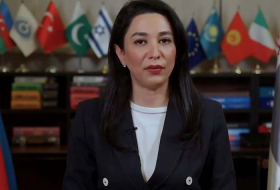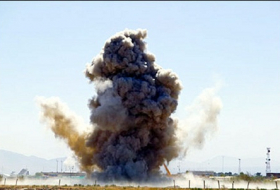Art historian and Leonardo scholar, Matthew Landrus, claims that the $450 million work was largely painted by Bernardino Luini, another artist in the Italian's workshop. Landrus believes that only about 20% to 30% of the painting was completed by Leonardo himself.
"It is a Leonardo painting with the help of workshop assistants," he said in a phone interview. "And I think that the help of Bernardino Luini is particularly noticeable in the painting."
Landrus will outline his case in an update to his 2006 book, "Leonardo da Vinci," which is due to be published next month -- just as the painting goes on display at The Louvre's new outpost in Abu Dhabi.
In the book, he attributes the painting to "Leonardo and studio." He believes that the master provided the initial design and then finished the painting, with studio assistants carrying out the rest of the work. And, by Landrus' observations, the style points to Luini as the closest match.
"By looking at other Luini paintings you can certainly see that the closest comparison to the 'Salvator Mundi' is his work," he said.
Leonardo's hand
Bernardino Luini was a North Italian painter born in around 1480. He painted in Leonardo's style, and often focused on Christian subjects. One of his paintings, "The Madonna and Child with Saint George and an angel," recently sold at auction in London for £173,000 ($224,000).
Landrus, who has seen the "Salvator Mundi" twice and has studied high-resolution scans of the painting, thinks Luini's hand is evident in the drapery and in parts of Jesus' robe and belt. But he maintains that Leonardo finished the painting, adding work on the hands, face and crystal ball, while creating an atmospheric texture using "sfumato," the process of subtly blending colors and tones.
Such collaborative efforts were standard practice at the time, according to Landrus.
"Leonardo has worked on the painting (and) I think that's important to recognize," he said. "We tend to think in black and white -- one or the other, when it comes to attribution, but that's definitely not the tradition. The tradition was to get help from the studio."

Record sale
Dating back to around 1500, "Salvator Mundi" is believed to have been commissioned by Louis XII of France. The artwork went missing in the late 18th century, and was subsequently dismissed as a copy in 1958, when it sold for just £45 ($58). It was later acquired by a group of art dealers who restored it and, in 2011, had it attributed to Leonardo.
The authentication process involved more than six years' research, according to Christie's, the auction house that handled the $450.3 million sale in 2017. The buyer was later revealed to be Abu Dhabi's Department of Culture and Tourism.
"Salvator Mundi" has previously been attributed to Luini, including when it was acquired by Sir Charles Robinson in 1900. At the time, Christ's face and hair had been heavily overpainted, though some experts have continued to question Leonardo's role since the painting's recent restoration.

Carl Court/Getty Images Europe/Getty Images
Other are in less doubt. Curator of Italian Paintings at London's National Gallery, Martin Kemp, sent the following statement to CNN Style by email: "The book I am publishing in 2019 with Robert Simon and Margaret Dalivalle (...) will present a conclusive body of evidence that the Salvator Mundi is a masterpiece by Leonardo. In the meantime I am not addressing ill-founded assertions that would attract no attention were it not for the sale price."
Would the value of the painting be affected, were it confirmed as largely the work of someone else?
"Traditionally, yes," said Landrus. "But I would argue that the studio help can actually improve the value, depending on the particular individuals who are helping. And I think Luini's assistance actually improved the painting rather than weakened it."
CNN
More about:















































